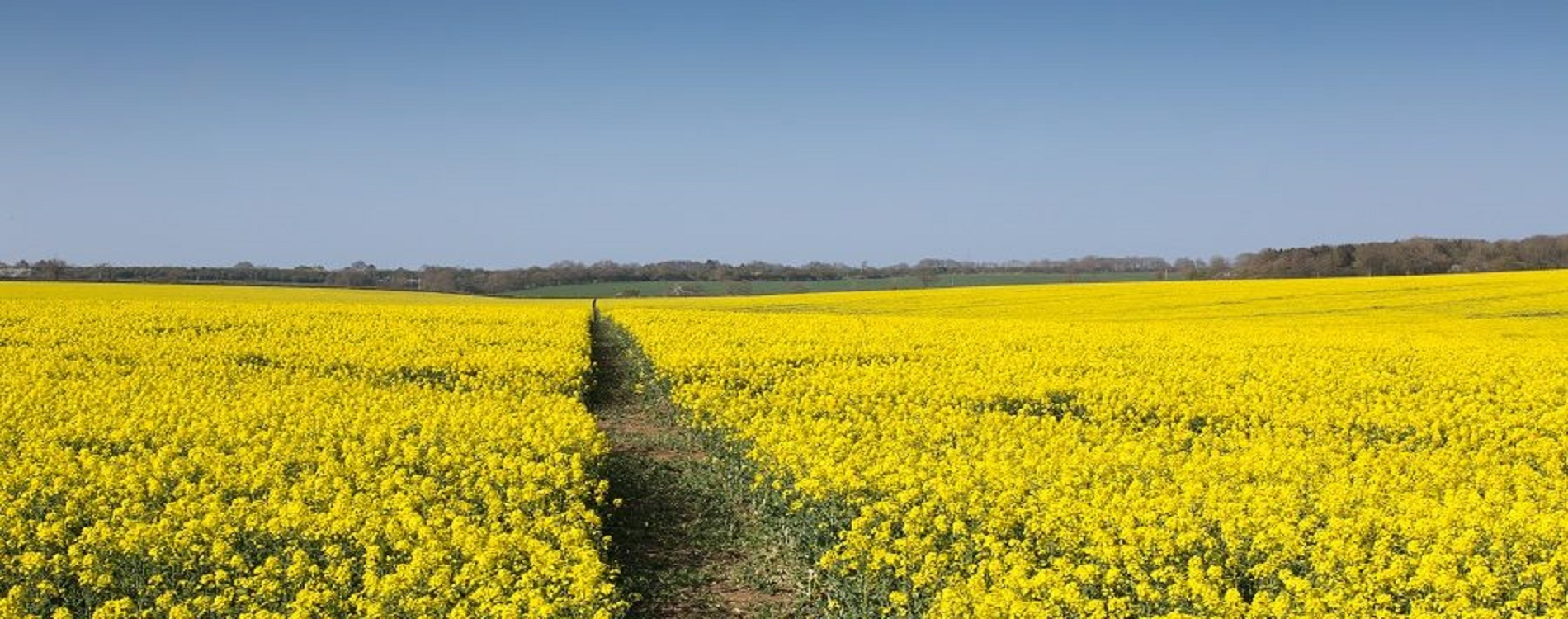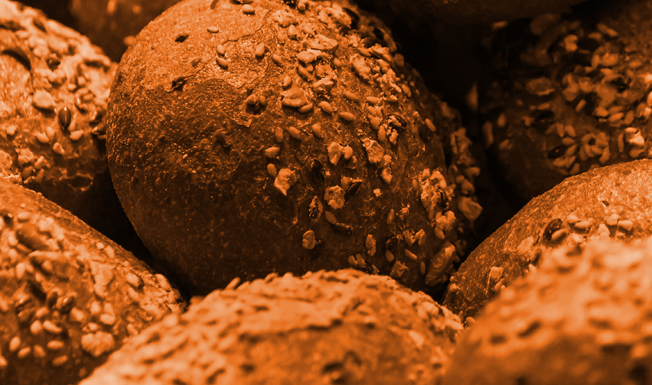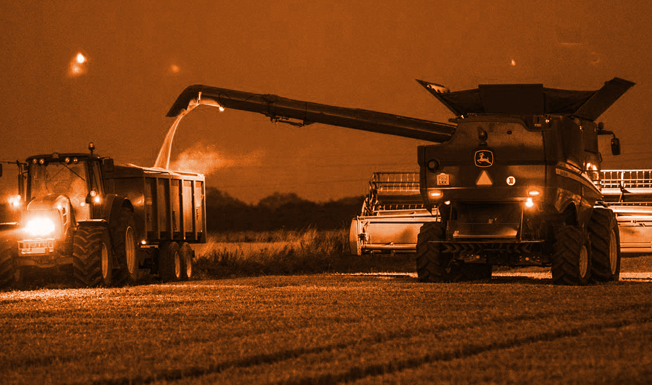Better buying, better selling – Little steps to a potential big profit
Record values for oilseed rape this spring must provoke a bittersweet response for many growers. But doing the little things could make the crop a big earner on farm again. CPM seeks advice.
By Mike Abram, CPM Magazine.
As oilseed rape prices broke record after record in May, it would be understandable if more growers had another look at the crop for the coming season – either to increase area or bring it back into the rotation.
Those forward prices of over £400/t mean there isn’t much to rival oilseed rape as a break crop for gross margin on paper, assuming they stick, notes Philip Crowther, head of inputs at Openfield.
Any increase in oilseed rape area this autumn is dependent on a favourable weather window around establishment, says Philip Crowther.
Unfortunately, land isn’t farmed on paper, and in the field the cabbage stem flea beetle challenges, and those of establishment in general remain, he stresses.
Generally though, the current season has been a bit more positive for the crop in the field, as well as in the trading market. While there are still some poor crops, many more established successfully than in recent seasons and have come through looking reasonable.
“With those forward values I’m optimistic that we should have seen the low mark in total area grown, subject to how the crop performs at harvest,” says Phil.
Any increase, however, will likely be relatively small, he suggests, and reliant on a favourable weather window around establishment in those areas where flea beetle challenges are highest.
Successfully overcoming the flea beetle challenge is akin to that used to tackle blackgrass, suggests Duncan Durno, Openfield’s arable technical manager. “We’ve had success controlling blackgrass by implementing programmes combining lots of cultural control methods together, and I think we need a similar approach with flea beetle.”
That starts with previous cropping and thinking about how best to take advantage of any weather window to drill and establish the crop in favourable conditions. “The best way is having as wide a window as possible. Winter barley is a good lead into oilseed rape to put some flexibility into picking when you want to drill rather than being forced into a drilling period with a later harvested winter wheat crop.”
The next step is trying to create conditions which are optimal for the oilseed rape to grow, and sub-optimal for flea beetles to thrive. “We know flea beetles like dry conditions, open unconsolidated cloddy seedbeds, which is the exact opposite of the optimum for oilseed rape.
“So the least soil you can disturb during establishment the better – that will conserve moisture and generally be more consolidated.
“The more trash or longer stubble you can leave also makes it less favourable conditions for flea beetle,” says Duncan.
That tends to favour direct drilling as the best establishment technique, although subsoilers with lower disturbance legs are still an option, he says.
Companion cropping is another potential part of a programme of measures. “It has two potential roles – attracting adult beetles away from the crop at establishment and preventing the beetles recognising the established crop to lay eggs resulting in a larval problem later in the season.”
Both white mustard and buckwheat have been shown to reduce larval numbers, he says, but at the point of establishment buckwheat doesn’t provide much cover as it emerges at the same time or slightly slower than the oilseed rape. “But when it is established, it does provide some disguise to prevent beetles moving into a bigger crop.
“If you’re drilling early, buckwheat could make a good companion crop, as you’re trying to drill before the adult flea beetles migrate into the crop, which usually is the second half of August.
“A companion crop of white mustard which is quicker out of the ground than oilseed rape might be better protecting seedling oilseed rape if you’re drilling slightly later.
“But that would need to be drilled with a Clearfield variety to remove the mustard before it created too much crop competition, and to reduce the risk from erucic acid contamination,” says Duncan.
Both seedbed nutrition and the use of biostimulant seed treatments also have a role in helping the crop establish quickly to reduce the risk from adult flea beetle attack, he adds.
But there’s no point putting all those measures in place without choosing a variety with the vigour, speed of establishment and growth habit to take advantage, stresses Duncan.
That’s why the team at Openfield spend time understanding the key characteristics growers will require for success and put together a portfolio of varieties that will fulfil those. With many varieties to choose from both on and off the AHDB Recommended List, the portfolio is selected to narrow down options for members, while maintaining choice and flexibility.
“We start to look at varieties early in the breeder trials, even before National Listing in some cases, and bring them into our own trials to look for the key characteristics and traits, including yield, as well as using as many other sources of information as possible,” explains Duncan.
In the current climate, varieties that can be drilled early, but still have plenty of vigour to be established later in drilling windows are key requirements. “If you’re drilling early, you’re also looking for a variety that will be stiff stemmed as they can get reasonably forward, and have turnip yellows virus (TuYV) resistance as aphids will migrate sooner into earlier drilled crops.”
Hybrids tend to have the most vigour, he notes, and their stem strength has been improved, which allows them to be drilled earlier than previously. Good disease resistance is also an important characteristic for earlier drilling, while spring vigour and ability to grow back if larvae attack is also a requirement that is sought after.
To help growers with decisions, Openfield has developed an online Seed Selector tool, which allows you to select varieties from Openfield’s portfolio based on individual specific needs.
“It can be accessed via our members’ Insight intranet site,” says Phil.
Seven of the best – Openfield’s key choices for 2021/22
There’s more choice than ever for the coming season, and many worthy options don’t feature on the AHDB Recommended List. CPM sought Duncan Durno’s views on the prime varieties to consider, and asked their respective breeders to highlight the key features.
LG Ambassador
Duncan: Ambassador is the joint highest yielding UK variety on the RL at 108% of controls for gross output. It has good stem stiffness, the Rlm7 phoma resistance gene, pod shatter resistance and has turnip yellows virus resistance.
It fits all those criteria of risk management, flexibility and top end yield, which we try to fit into all the varieties we select.
Liam Wilkinson (Limagrain): Ambassador has proven performance on farm and in trials over a number of seasons. It’s probably the variety to beat in terms of performance in the UK.
It has a wide drilling window from end of second week of August to end of September. It also has the N-flex characteristic with enhanced nitrogen use efficiency giving another level of security to growers.
DK Excited
Duncan: DK Excited is one of only two TuYV-resistant varieties commercially available from the Dekalb brand. It doesn’t sit within the RL system, but through Bayer’s breeder trials it’s at the top end of yield. It fits pretty much all our key criteria, and gives choice to growers.
Again, it has the Rlm7 phoma gene, pod shatter and TUYV resistance, with better stem stiffness than we used to see from some of the DK varieties.
Matthew Clarke (Bayer): The reason we have such confidence in DK Excited’s yielding ability is that within our breeding and development trials network it has been our highest performing variety across our European network.
It has a really wide drilling window and would be fine to drill early in terms of its growth characteristics.
Tennyson
Duncan: Tennyson from Elsoms is a very high yielding candidate hybrid variety. Good vigour, good spring growth, very strong disease resistance including a nine for phoma, which is not reliant on Rlm7. Instead it has polygenic resistance, which makes it less likely to be overcome by resistance.
Jack Holgate (Elsoms): With its excellent disease package combined with TuYV resistance, Tennyson is an ideal lower risk variety for the east and west regions. Yield is important, but is insignificant if you can’t get the crop established. Tennyson, with its impressive vigour and disease package, increases the chance of success.
It has a wide drilling window, giving flexibility, and with strong stem stiffness and lodging resistance it’s a great option for exposed sites.
Duplo
Duncan: Duplo also has excellent early vigour, but its slightly earlier development characteristics make it less suitable for the very early drilling dates.
It’s another hybrid, and it’s nicely up in the candidate pack for gross output, with both turnip yellows virus and pod shatter resistance. A candidate for next year’s RL, drill from around mid-August.
Sarah Hawthorne (DSV): Duplo’s our most powerful, fastest establishing hybrid across Europe. It does particularly well in difficult growing conditions – it has a deep rooting system, which helps in drought conditions.
It also has our new trait – N efficiency, which combines a number of physical characteristics such as root development, plant architecture and drought tolerance to ensure the variety is able to make as much use as possible of every kg of N applied.
Amarone
Duncan: For growers looking for a conventional variety, Amarone is another candidate for next season’s RL. It’s the highest yielding conventional candidate variety. It also has TuYV resistance and is at the upper end of vigour for conventional varieties, so again if you’re drilling in that very early August slot, the TuYV resistance is vital and this is stiff enough in the stem to drill at that time.
Liam Wilkinson (Limagrain): Amarone gives good performance across the UK. It’s one of the quickest developing conventional varieties in the autumn, which makes it very well suited for early drilling from last week of July to middle of September.
Aardvark
Duncan: An alternative conventional variety, Aardvark, is more vigorous. It has good disease resistance, especially light leaf spot, but not TuYV resistance, so you would be increasing your risk if you put it into an earlier drilling slot.
Aardvark is better suited as a second variety if you’re planning to drill later or around two separate rain events perhaps.
Liam Wilkinson (Limagrain): Aardvark has the best disease-resistance package of the Limagrain conventionals. It has a six for phoma which is based on quantitative gene resistances, and a seven for light leaf spot.
It’s early flowering, has good stem stiffness and is very vigorous with consistent performance.
Matrix CL
Duncan: Matrix is a new candidate Clearfield variety. It’s brought Clearfield yields up into the pack with other non-Clearfield hybrids. It also has improved vigour, which other Clearfield hybrids have struggled with compared with other hybrids, so it’s upped the Clearfield game.
It also has Rlm7 phoma resistance, pod shatter resistance and is the first Clearfield variety with TuYV resistance.
Sarah Hawthorne (DSV): A candidate for the whole of the UK, Matrix is the highest yielding Clearfield variety ever to be bred. It’s the first Clearfield variety with all four key traits – Rlm7, pod shatter, TuYV resistance and Clearfield.
The addition of TuYV resistance to a Clearfield variety is a big step forward. UK TuYV infection levels have hit 90% in recent years with colleagues in Europe reporting yield losses as high as 20% when the virus really takes hold. This spring you could really spot the varieties that didn’t have resistance.”
Better buying, better selling
To remain at the forefront of arable farming and to maximise the value from every hectare of crop grown requires a keen understanding of the grain market, the seed to supply it, and the fertiliser to feed the crop. Through this series of articles, CPM is working with Openfield to provide a market insight and help farmers to focus on these major business decisions to ensure better buying of inputs, and better selling of the produce.
Openfield is Britain’s only national farming grain-marketing and arable inputs co-operative, owned by over 4000 arable farmers. Openfield’s team works with a total of 6000 farmers to supply some of the biggest and best-known names in the British food and drink manufacturing industry.
But there’s more than just grain to Openfield, supplying seed and fertiliser, providing grain storage and offering expert advice on grain marketing and risk management. This delivers innovative supply chain solutions to its farmers and clients.




